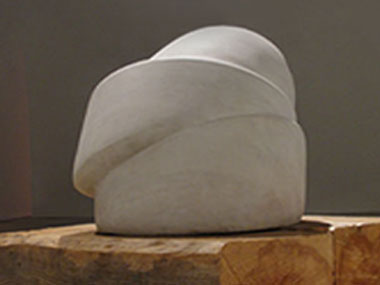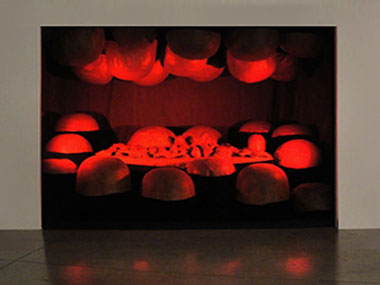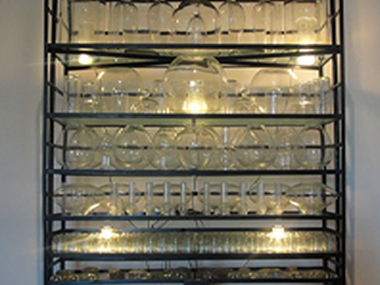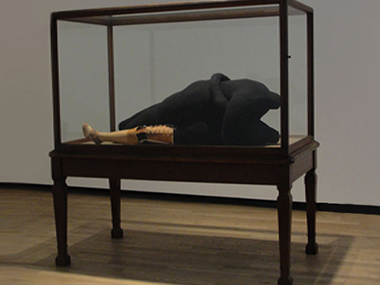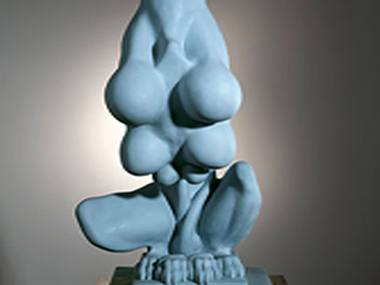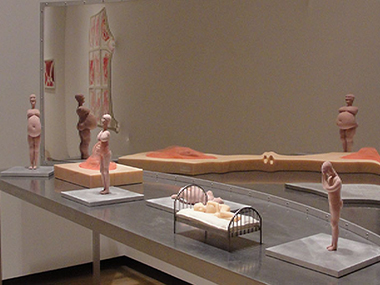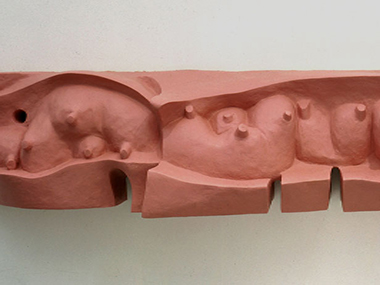Maman
Installed in Proa?s esplanade, the monumental and emblematic spider Maman (1999) will be the prologue to the exhibition Louise Bourgeois: the return of the repressed. Thus, Proa will insert one of the artist?s capital works into public space, as was done at the Tate Gallery in London (2007), the Guggenheim Museum in New York (2008), and earlier the Guggenheim in Bilbao (1999).
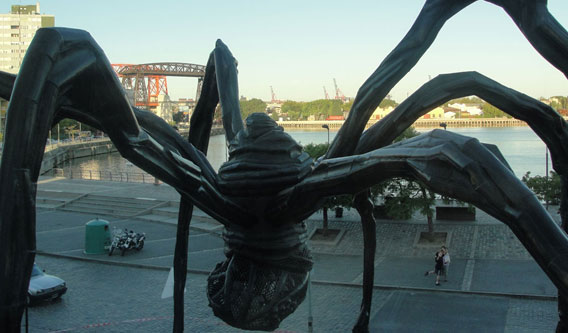
Bourgeois wrote: ?The Spider is an ode to my mother. She was my best friend. Like a spider, my mother was a weaver. My family was in the business of tapestry restoration, and my mother was in charge of the workshop. Like spiders, my mother was very clever. Spiders are friendly presences that eat mosquitoes. We know that mosquitoes spread diseases and are therefore unwanted. So, spiders are helpful and protective, just like my mother.?
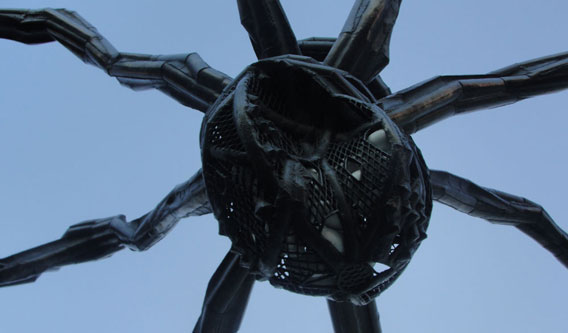
Made of stainless steel, bronze, and marble, Bourgeois conceived of this spider as a representation of the power and threat of her mother: to spin, to weave, to care for, to provide protection. Maman is the largest of the series of spider sculptures, measuring 9 meters in height and 10 meters in width.
After Buenos Aires, Maman will be exhibited in the Museu de Arte Moderna (MAM) in Rio de Janeiro. Proa considers its esplanade as an expository space. In this case, Maman will be put into dialogue with the public, introducing the artist?s universe and interacting with the educational activities that are realized in the space.
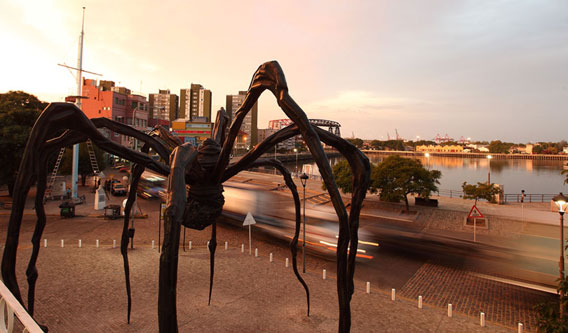
Sala 1
The works are organized in the order of the visit. Measures are noted as follows: height x width x length. Except when stated, works are courtesy of the Louise Bourgeois Trust.
Bourgeois? spiders are an homage to her mother. They symbolize protection, nurturing, and reconciliation. Spider (1997) is one of Bourgeois? series of Cells, installations made in the 1990s that explore memory and desire through the five senses. Here the spider?s web is given an architectural form in the cage that encloses objects from Bourgeois? past. Bourgeois was obsessed with her past and yet, wished to be liberated from it in order to experience the present. Thus, the cage can be viewed as both refuge and trap (hence the animal bones).
Inside the cage, Bourgeois placed the glass cupping jars, which as an adolescent she placed on her mother?s back when the latter was sick with Spanish flu. The tapestries refer to the family atelier in which the young Bourgeois drew in the feet that were missing from tapestries that needed to be rewoven. In one fragment of tapestry, the genitals of the putti have been cut out, as her mother had done to appease their puritanical American clients. Her mother replaced the holes with flowers, and kept a collection of cutout fragments of male genitalia. The hanging forms are aides-memoire consisting of perfume, a photograph, a locket, and a cloth, which serve to conjure the past.
While under analysis, the patient sits in the chair and attempts to give a form to the inchoate mass of sensory perceptions, memories, and emotions Psychoanalysis is the process of tracing the etiology of neuroses by excavating one?s past.
The suite of engravings He Disappeared Into Complete Silence (1947) consists of nine plates pairing terse, fabulist texts with vertical architectural forms that, in their isolation from one another, parallel the contemporaneous Personnages and deal with the inability of people to communicate with each other.
Spider, 1997
Steel, tapestry, wood, glass, fabric, rubber, silver, gold and bone. 449.6 x 665.5 x 518.2 cm.
Private Coll., Courtesy Cheim & Read
He Disappeared into Complete Silence, 1947
Suite of nine engravings with text. Each: 25.4 x 35.6 cm
Sala 2
Dagger Child (Niño puñal), 1947-1949
Bronce, pintura y acero inoxidable. 192,1 x 30,5 x 30,5 cm
St. Sebastienne (Santa Sebastiana), 1947
Acuarela y lápiz sobre papel. 27,9 x 18,4 cm.
Col. privada, Nueva York
Untitled (Sin título), 1953
Bronce. 150,5 x 21,6 x 21,6 cm
Forêt (Night Garden) [Bosque (jardín nocturno)], 1953
Bronce, pintura blanca y pátina marrón y negra. 92,1 x 47 x 36,8 cm
Labyrinthine Tower (Torre laberíntica), 1962
Bronce. 45,7 x 30,5 x 26,7 cm
Untitled (Sin título), 1950
Tinta sobre papel azul. 21,6 x 10,2 cm
Lair (Guarida), 1963
Látex. 24,1 x 42,5 x 36,5 cm
Clutching (Aferramiento), 1962
Yeso. 30,5 x 33 x 30,5 cm
Torso, Self Portrait (Torso, autorretrato); 1963-1964
Bronce, pintura blanca, pieza de pared. 62,9 x 40,6 x 20 cm
Torsade (Trenza), 1962
Bronce. 20,3 x 20,3 x 15,2 cm
Rondeau for L (Rondó para L), 1963
Bronce, pátina verde y negra. 27,9 x 27,9 x 26,7 cm
Lair (Guarida), 1962
Bronce, pintura en blanco. 55,9 x 55,9 x 55,9 cm
Untitled (double sided) [Sin título (doble faz)], c.1960
Recto: tinta y lápiz sobre papel. Verso: lápiz sobre papel. 34,3 x 25,4 cm
Soft Landscape, 1967 (Paisaje suave)
Aluminio. 17,1 x 50,2 x 43,8 cm
Le Regard, 1966 (La mirada)
Látex y tela. 12,7 x 39,4 x 36,8 cm
Untitled, 1953 (Sin título)
Tinta sobre papel. 29,2 x 18,4 cm
Amoeba, 1963-1965 (Ameba)
Bronce, pintura blanca, pieza de pared. 95,3 x 72,4 x 33,7 cm
Unconscious Landscape, 1967-1968 (Paisaje inconsciente)
Bronce, pátina negra y pulida. 30,5 x 55,9 x 61 cm
Dans la Tourmente, 1950 (En la tormenta)
Lápiz y tinta sobre papel. 27,9 x 21,6 cm
Germinal, 1967
Mármol. 14 x 18,7 x 15,9 cm
Untitled, 1960 (Sin título)
Tinta roja sobre papel. 29,8 x 22,9 cm
The Fingers, 1968 (Los dedos)
Látex y yeso. 8,3 x 44,5 x 22,9 cm
The Loved Hand, 1967 (La mano amada)
Bronce. 22,9 x 31,8 x 20,3 cm
End of Softness, 1967 (Fin de la blandura)
Bronce, pátina dorada. 17,8 x 52,1 x 38,7 cm.
Col. privada, Nueva York
Fillette (Sweeter Version), 1968-1999 [Niñita (versión más dulce)]
Goma de uretano, pigmentada, pieza colgante. 59,7 x 26,7 x 19,7 cm
Portrait of Robert, 1969 (Retrato de Robert)
Bronce, pintado de blanco. 33 x 31,8 x 25,4 cm
Medical Horizontal (double sided), 1998 [Médico horizontal (doble faz)]
Tintas coloreadas, lápiz y corrector sobre papel. 22,9 x 30,5 cm.
Col. privada, Nueva York
Untitled, 1942 (Sin título)
Lápiz sobre papel. 22,9 x 21,6 cm.
Col. privada, Nueva York
Harmless Woman, 1969. (Mujer inofensiva)
Bronce, pátina dorada. 28,3 x 11,4 x 11,4 cm
Rabbit, 1970 (Conejo)
Bronce, pieza sobre pared. 58,4 x 28,9 x 14,9 cm
Loose sheet of writing, c.1959 (Nota suelta)
27,9 x 21,6 cm,
Louise Bourgeois Archive, Nueva York
Le Trani Episode, 1971 (El episodio Le Trani)
Bronce, pátina oscura y pulida. 41,9 x 58,7 x 59,1 cm
Janus Fleuri, 1968 (Jano florido)
Bronce, pátina dorada, pieza colgante. 25,7 x 31,8 x 21,3 cm
Hanging Janus With Jacket, 1968 (Jano colgante con chaqueta)
Bronce, pátina oscura y pulida, pieza colgante. 27 x 52,4 x 16,2 cm
Art is a Guaranty of Sanity, 2000 (El arte es garantía de cordura)
Lápiz sobre papel rosa . 27,9 x 21,6 cm.
Col. The Museum of Modern Art. Nueva York
Untitled, 2002 (Sin título)
Tinta y lápiz en papel de pentagrama. 29,8 x 22,9 cm
The Punishment of the Dagger Child (double sided), 1998 [El castigo del niño-puñal (doble faz)]
Tinta y gouache sobre papel. 29,2 x 22,9 cm
Here And Now (Aquí y ahora), 1988
Tiza en papel azul. 73,7 x 58,4 cm
The Beating of the Heart (double sided) [El latido del corazón (doble faz)], 2006
Recto: acuarela y lápiz sobre papel gofrado;
Verso: acuarela sobre papel. 76,2 x 53,3 cm
The Smell of Feet (El olor a pies), 1999
Tinta y corrector sobre papel. 27,9 x 21,6 cm
I never promised you a rose garden (Nunca te prometí un jardín de rosas), 1994
Tinta sobre papel. 7,3 x 12,7 cm
Self portrait: La Nauseé (Autorretrato: la náusea), 2001
Tinta roja y lápiz sobre papel 23,5 x 20,3 cm
Je les Protégerai (Los protegeré), 2002
Tinta y lápiz sobre papel. 24,1 x 20,3 cm
Key Hole (Cerradura), 2005
Tinta sobre papel cuadriculado rosado. 27,9 x 18,7 cm
Spiral (Espiral), 2009
Gouache sobre papel. 59,7 x 45,7 cm
Spiral (Espiral), 2009
Gouache sobre papel. 59,7 x 45,7 cm
Untitled (Sin título), c. 1970
Ovalo: pintura sobre panel. 119,4 x 149,9 cm.
Col. privada, Nueva York
Cinq (Cinco), 2007
Tela y acero inoxidable, pieza colgante. 61 x 35,6 x 35,6 cm
Untitled (Sin título), 2007
Tela e hilo. 33 x 47 x 30,5 cm; Vitrina de vidrio, madera y acero inoxidable: 177,8 x 76,2 x 60,9 cm
Couple (Pareja), 2001
Tela, pieza colgante. 48,3 x 15,2 x 16,5 cm
Rejection (Rechazo), 2001
Tela, acero y plomo. 63,5 x 33 x 30,5 cm; Vitrina de aluminio y vidrio: 185,4 x 68,5 x 68,5 cm.
Col. John Cheim, Nueva York
Couple I (Pareja I), 1996
Tela, pieza colgante. 203,2 x 68,6 x 71,1 cm
Knife Figure (Figura cuchillo), 2002
Tela, acero y madera. 22,2 x 76,2 x 19,1 cm; Vitrina de vidrio, madera y acero inoxidable: 177,8 x 96,5 x 45,7 cm
Seven in Bed (Siete en una cama), 2001
Tela y acero inoxidable. 29,2 x 53,3 x 53,3 cm; Vitrina de vidrio, madera y acero inoxidable: 172,7 x 85,1 x 87,6 cm
Untitled (Sin título), 1999
Tela, madera y metal. 64,8 x 20,3 x 30,5 cm. Vitrina de vidrio y madera: 188 x 60,9 x 60,9 cm
Fée Couturière (Hada costurera), 1963
Bronce, pintura blanca, pieza colgante. 100,3 x 57,2 x 57,2 cm
Arch of Hysteria (Arco de histeria), 1993
Bronce, pátina pulida, pieza colgante. 83,8 x 101,6 x 58,4 cm
Untitled (I Have Been to Hell And Back) [Sin título (He estado en el infierno y volví)]
, 1996
Pañuelo bordado. 49,5 x 45,7 cm.
Col. privada, Nueva York
Single I (Soltero I), 1996
Tela, pieza colgante. 213,4 x 132,1 x 40,6 cm
Claustrophobia and Omnipotence (Claustrofobia y omnipotencia), 2007
Lápiz sobre papel, serie de cuatro. Cada uno: 75,6 x 57,2 cm
Gallery 3
Rather than be dependent on architectural spaces, Bourgeois began creating her own architecture in a series called Cells that contain objects both belonging to the artist and made by her. Red Room (Parents) is a dramatic staging of the psychoanalytic concept of the primal scene, where the child enters into the bedroom witnesses her parents in coitus and tries to make sense of what he perceives. As Freud noted, the primal scene is often a fantasy. For Bourgeois, red is the color of violence, passion, blood, and emotional intensity.
The Femme Maison (1946-47) paintings touch upon the problem of identity for women. Here, the heads of nude female figures have been replaced by architectural forms, resulting in a symbolic condensation of the conflict between domestic and sexual roles. For Bourgeois architecture symbolizes the social world that attempts to define the individual, in contrast to the inner world of emotion. The tension between figure and architecture mirrors the dichotomy between mind and body. Bourgeois suffered from acute agoraphobia, and often withdrew into her house for protection. Yet, as Bourgeois wrote, ?the security of the lair can also become a trap.?
The Destruction of the Father (1974) is the culmination of the works Bourgeois made in the 1960s and early 70s, synthesizing the cave-like structure of the lairs, the primordial forms of the soft landscapes, and the more explicit sexual attributes of works such as Sleep II (1967). According to Bourgeois? account, she was reenacting a childhood revenge fantasy of revolt against her father who gloats and brags at the dinner table and whom, in exasperation, she dismembers and devours. In Bourgeois? visual realm, each thing contains the form of appearance of its opposite. The pendulous breast-like forms set within a recessed interior like an orifice express the wish to return to the womb and be reunited with the lost mother. More, to be ?eaten? by the mother or to ?eat? the father is an act with strong sexual and incestuous overtones. The tension of all of Bourgeois? work resides in the unresolved and irresolvable contradictions between binary oppositions? male and female, conscious and unconscious, past and present, active and passive, inside and outside, pleasure and unpleasure.
50. The Feeding, 2007
Gouache on paper. 59.7 x 45.7 cm.
Courtesy Cheim & Read and Hauser & Wirth
51. Red Room (Parents), 1994
Mixed media. 247.7 x 426.7 x 424.4 cm
Coll. Ursula Hauser, Switzerland
52. Femme Maison, 1946-1947
Oil and ink on linen. 91.4 x 35.6 cm
53. Femme Maison, 1946-1947
Oil and ink on linen. 91.4 x 35.6 cm
54. Sleep II, 1967
Marble. 59.4 x 76.8 x 60.3 cm
Two wooden timbers, each: 27.9 x 83.8 x 35.5 cm
68. The Destruction Of The Father, 1974
Plaster, latex, wood, fabric and red light. 237.8 x 362.3 x 248.6 cm
Gallery 4
Throughout her life, Bourgeois suffered from an intense fear of abandonment. The fabric text piece I Am Afraid (2009) deftly links three images ? ?empty stomach/ empty house/ empty bottles? ? in a condensed metaphor that expresses this fear by stringing together body and architecture, container and contained. Le Défi II (1992) speaks to the need for restraint and self-control and to Bourgeois?s awareness that human relationships are fragile. The ?challenge? of which the French title speaks is the challenge to resist the urge to give way to aggression or hostility, which may unsettle the precariously balanced cabinet, with its carefully placed and easily broken glass elements. These elements may also be read as symbols of the internal organs, and the entire cabinet as another architectural metaphor for the human body. Their transparency signifies a world without secrets, Bourgeois? compulsion to confess everything out of a desire for forgiveness.
Couple IV (1996) presents a man and a woman in black fabric in the sexual act placed within a 19th century Victorian vitrine. The female figure is wearing a prosthesis, suggesting that she is incomplete, perhaps wounded, as are so many of Bourgeois? representations of women. Despite her handicap, she is defined by her relationship to him and fearful of being separated from this desire. Conscious and Unconscious (2008) recapitulates in fabric elements the stacked forms of her earlier segmented Personnages, just as the more organic form in blue rubber recalls the soft forms of the 1960s. The five spools symbolize Bourgeois? two families of five (the family into which she was born and the family she had with her husband Robert Goldwater), and evoke the Bourgeois family tapestry atelier. The thin threads express both the tenuous connection of the five family members and the strands of memory embedded in the unconscious.
This room was conceived in hommage to one of Bourgeois? favorite phrases, ?pink days? (good days) and ?blue days? (bad days). If the preceding room is more somber and brooding in tone, dwelling upon the difficulty and fragility of human relationships, this room is lighter and more delicate. In Nature Study (1984-2002) animal and human, male and female sexual parts are fused in an uncanny hybrid. The male genital is protected by the multiple breasts, just as Louise felt she was protecting her husband and three sons. Mamelles (1991) consists of a cluster of breasts, part objects that form a bodily landscape and signifies the nourishing mother. The red gouaches made late in Bourgeois? career show her honing in on the most universal events and cycles of human life: birth, copulation, insemination, gestation, family and death. In The Family (2008) distinct moments ? penetration, pregnancy, and motherhood ? are collapsed into each gouache in this grid of nine.
The Reticent Child (2004) relates the stages of a relationship between a mother and a son. In this work, the child is late in being born, a circumstance that will affect his entire relationship to the world. The concave mirror behind the fabric and marble figures gives back distorted images of this tableau, implying that memory, like desire, is shaped by emotion and structured in a non-linear fashion. As always in Bourgeois? work, each image is properly dialectical and involves its opposite. Hence the iconography of nurturing and breastfeeding not only expresses Bourgeois? concern with her role as mother but also shows her in need for a nurturing mother (hence ?Maman? as if calling out for her mother) as she became more frail and dependent with age. Thus, these raw images of birth, the coming into the world and her connection to her mother, foretell the inevitability and proximity of death.
56. Conscious and Unconscious, 2008
Fabric, rubber, thread and stainless steel. 175.3 x 94 x 47 cm
White oak, glass and stainless steel vitrine: 224.8 x 167.6 x 94 cm
57. I am Afraid, 2009
Woven fabric. 110.5 x 182.9 cm
58. Le Défi II, 1992
Painted wood, glass and electric lights. 200.7 x 179.7 x 59.7 cm
59. Couple IV, 1997
Fabric, leather, stainless steel and plastic. 50.8 x 165.1 x 77.5 cm
Wood and glass Victorian vitrine: 182.9 x 208.3 x 109.2 cm
61. Maman, 2009
Gouache and pencil on paper. 91.4 x 121.6 cm
62. The Feeding, 2007
Gouache on paper. 59.7 x 45.7 cm
Courtesy Cheim & Read and Hauser & Wirth
63. The Good Mother, 2007
Gouache on paper. 37.1 x 27.9 cm
64. The Feeding, 2007
Gouache on paper. 60 x 45.7 cm
Coll. Museum of Modern Art, New York
65. Maman, 2008
Gouache on paper. 45.7 x 61 cm
66. Nature Study, 1984-2002
Blue rubber. 76.2 x 48.3 x 38.1 cm.
Stainless steel base: 104.1 x 55.2 x 55.2 cm
67. The Family, 2008
Gouache on paper, suite of nine. Each: 36.8 x 27.9 cm
68. The Reticent Child, 2003
Fabric, marble, stainless steel and aluminum: six elements. 182.9 x 284.5 x 91.4 cm
69. Mamelles, 1991
Pigmented urethane rubber, wall relief. 48.3 x 304.8 x 48.3 cm
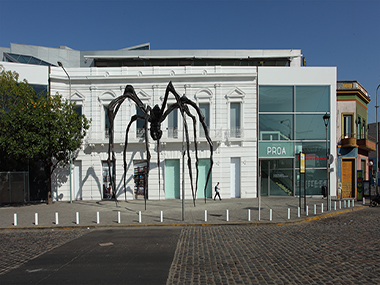
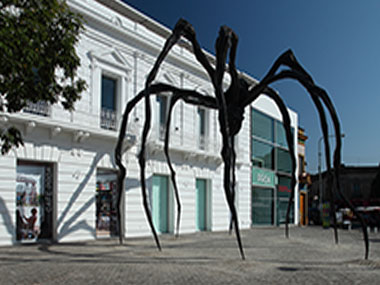
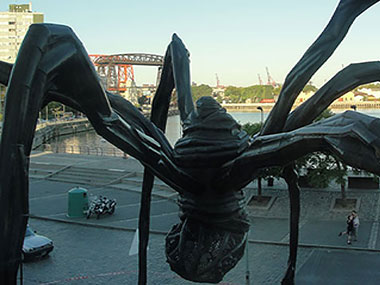
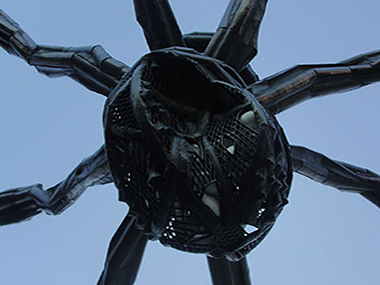
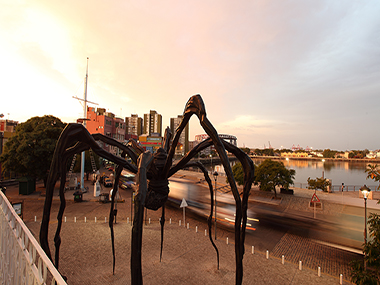
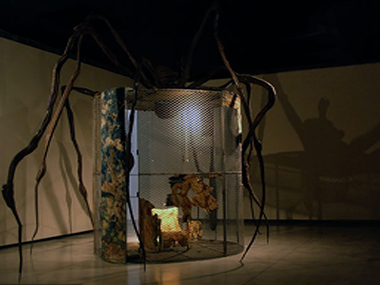
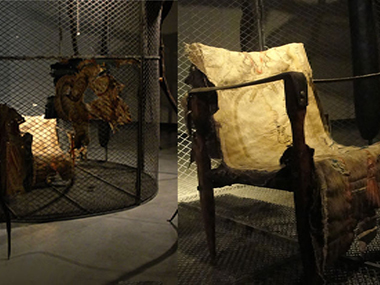
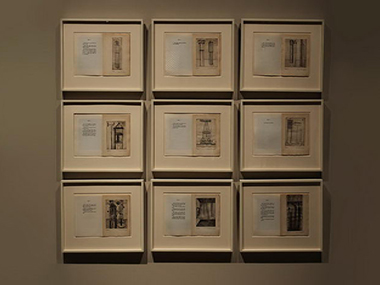
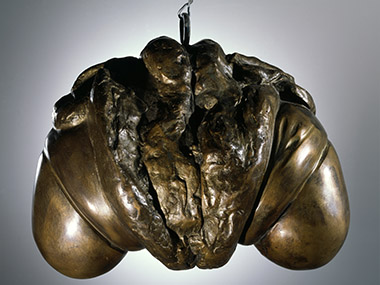
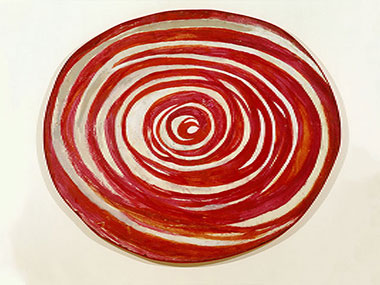
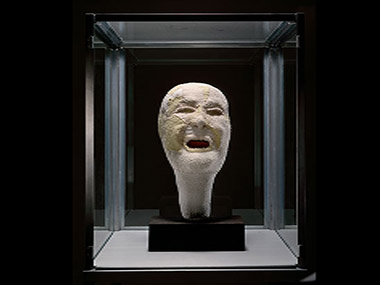
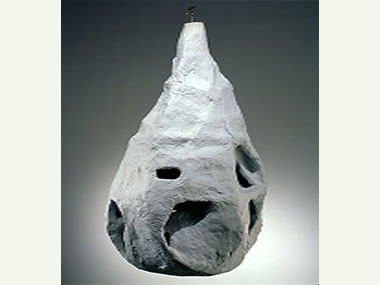
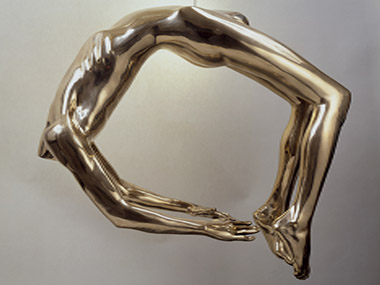
![Red Room (Parents), 1994 [Cuarto rojo (padres)]](http://proa.org/images-exhibiciones/exhibicionn_subbloque_foto_thumb_351.jpg)
